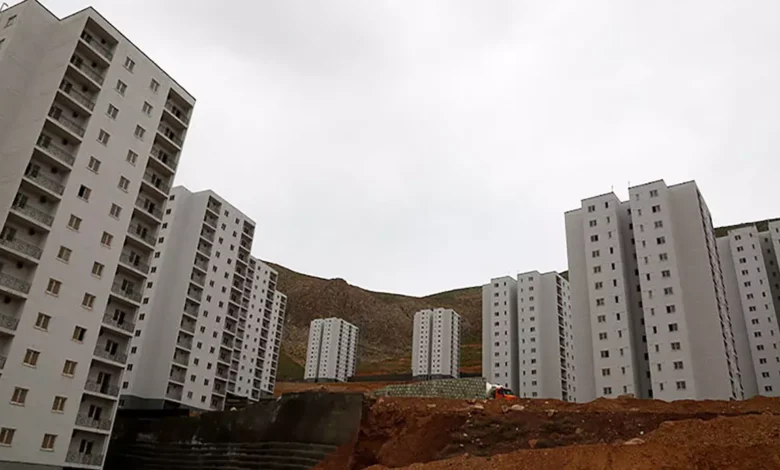The waiting index for housing in the country reached 74 years! – Tejarat News

According to Tejarat News, the findings of LH, referring to the official statistics related to the income and expenses of urban households in 1401, show that the average waiting period for housing in the country has reached 74 years, which is around the age of life expectancy in the country. Is. The data related to the level of income and annual expenditure of urban households is one of the two components that can be used to measure, along with the average housing price, the access index and the length of the waiting period for first-time households to become a householder. Although the official statistics related to the average level of housing prices in Tehran and the country in 1401 have not yet been published, but based on a report that was published a while ago titled “Challenges of urban housing policy in Iran” by the Majlis Research Center, in which percentages related to The increase in the price of housing was announced, estimates show that last year the average price of each square meter of housing in the cities of the country reached 20 million tomans.
Also, the official data related to the average housing price in Tehran in the first three seasons of 2011 and the estimates of the average housing price in the capital in winter indicate that last year the average price of each square meter of housing in Tehran reached around 38 million tomans. Last year, the average annual income of urban households in the country was equal to 167 million Tomans; The average annual cost of these households is 137 million tomans. In Tehran, the average annual income of households is estimated at 230 million tomans and their average annual expenditure is 196 million tomans. These statistics show that the saving power of urban households in the country was 16% last year and 15% in Tehran. This rate was around 30% in the 80s and around 25% in the 90s. Using these two indicators, we calculated the duration of the households’ access to housing based on the two indicators “access to housing” and “waiting to buy housing”.
These calculations show that the “access to housing” index (the ratio of the average price of a 100 square meter apartment in the country to the annual income of households in 1401, which shows that depending on the total income of a year, it takes a few years for first-time homeowners to own a house) last year in The country has been equivalent to 12 years. In 1400, this amount was equivalent to 10 years. In Tehran, this amount reached 17 years in 1401. Based on the “expectation index for housing purchase”, that is, the length of time to become a homeowner with the current saving power of households, based on the income-expenditure of households in 1401, the savings rate has reached 16% in the country and 15% in Tehran, first-time homeowners to buy a unit A 100-square-meter residential house in the country must wait 74 years, which is equivalent to a lifetime (based on the country’s life expectancy index). In 1999, this amount was 36 years with a savings of about 30%. In 1996, the year before the housing boom, the average waiting period for becoming a homeowner was less than 15 years. The standard rate in the world based on the standard defined by Habitat (United Nations Human Settlements Office) is about 10 years. In Tehran, the waiting period for buying a house with 15% income savings has reached more than a century, i.e. 112 years, in 1401.
The housing crisis has reached the sixth decile of society
This amount was about 109 years in 2019. In 1998, with a savings rate of about 25-30%, this amount was equivalent to 60 years. While the average savings rate of households in the 80s was equal to about 30% of their one-year income, the waiting period for buying a house in 1984 based on household savings was equal to 22 years and in 1979 it was equal to 12 years. These numbers show well the situation of households getting further and further away from access to housing during the last two decades. In recent weeks, through a field survey, the increase in the length of the waiting period to buy housing in generation Z (a group from the seventies) who have recently entered the labor market) by relying on their declaration of their monthly savings, to 166 years in Tehran. All these statistics show that the housing market in Iran and Tehran is not working properly. An issue that the Majlis Research Center has recently mentioned in several consecutive and different reports. Among them, in a report that was recently published by the research arm of the parliament, it was announced that the housing crisis has reached the sixth decile of the society, and practically the first to sixth deciles of the society can be interpreted as the deprived of housing. Considering that the longer waiting time and households’ access to housing means the entry of a wider range and more number of young couples and first-time households into the rental market, the most important consequence of this issue is in the form of increasing demand pressure in the rental market and increasing the rate of rent growth. it shows. An issue that has shown itself in recent years in the form of recording historical peaks of inflation of 50% and above in this market.
Three paths to improvement
But the important question is what is the solution to reduce the length of the marathon of becoming a homemaker for the first housewives and what policies should the policymaker apply in this field; The studies and also the statements of Hojjatala Mirzaei, the economist, lead to the design of three paths as “main path”, “shortcut path” and “temporary passage” to overcome the real estate crisis. Expert opinions indicate that the main path is “at least a decade of 8% economic growth” for “increasing per capita income and improving the economic situation and thus strengthening the purchasing power of housing” along with “economic reforms aimed at reducing general inflation and reducing liquidity growth in order to Decreasing the rate of housing price growth” as well as “controlling the risks that generate inflationary expectations in the society, which have affected the speculative demand for housing purchases and the sharp increase in housing inflation in these years”, passes. “Shortcut” also goes through the path of “creating and developing professional rental” as well as “accumulation of small-sized residential units simultaneously with high economic growth in a period of 3 to 5 years”. But there is also a “temporary passage” in between and that is “making renting attractive” through “making the freezing of property unattractive and leaving houses unused by multi-family houses”; In this way, the supply of rental houses will increase somewhat in the market and a group of homeless couples will be saved from this very long marathon.
first decile; 248 years
Hojjatala Mirzaei, an economist, stated that the waiting period for owning a house has reached more than a lifetime on average, and told “Economic World” that according to the calculations made recently by the Ministry of Roads and Urban Development in the studies related to the seventh development plan in the housing sector It has been reported that the waiting period for households without housing located in the first income decile has reached 248 years.
Although in higher deciles, the waiting period for becoming a householder decreases relatively, but on average, this amount reaches 85 to 100 years for households, which is more than a lifetime.
He said: This shows that many households, especially the first deciles of income (deciles one to four), will bury their dream of becoming a housewife. The main way to improve households’ access to housing and reduce the length of the waiting period for them to own a house is through the path of “long-term economic growth”. “Large”, “sustainable” and “comprehensive” growth of more than 8% should be created in a long-term period of, for example, 10 years. In this way, the purchasing power of households, especially the low-income groups, can be restored, and the banking system can improve itself through these growths and regain its lending capabilities. Because currently the main problem in the housing market is not only focused on the weak purchasing power of households and their financial inability to pay the high installments of bank loans, but also the banks currently do not have the ability to pay powerful and effective long-term facilities in the field of housing. . In terms of housing price fluctuations, considering the current inflationary conditions, predictability of the market for a two-year period is confusing, complicated, with fluctuations and very difficult. If this economic growth is not “inclusive”, its positive effects and consequences will not spread to the lower deciles. Mirzaei pointed out: But the shortcut to improving the situation in the housing market and improving the access index of households to the house will pass through a medium-term period of “3 to 5 years”. A short-cut solution is to “develop leasing” and create incentives for large companies, especially in the non-governmental public sector, such as banks, that use their properties as a professional leasing tool, and thus have access to a stable source of income. The second short-cut solution is “development of miniaturization and massification” of residential units of 25 to 60 square meters.
Especially in urban lands located within the boundaries of cities and urban reserve lands, as well as demanding suburbs with residential facilities that have enough land to supply per capita and also build public parking lots. But the condition of all these measures is regulatory reforms in the urban governance system. According to him, in professional leasing, the most important obstacle is the high exchange costs, which makes the income from leasing unattractive compared to these costs, and has caused this market not to form in the past. While basically, part of the deciles of society, especially deciles 1 to 4, have no way to provide housing except the rental market and should be supported in a professional rental system. In miniaturization and massification, there are regulatory restrictions, especially in some urban planning rules, such as the requirement to provide parking or facade rules, which can be facilitated by simplifying these rules. On the other hand, it is necessary for the government and the policy makers to increase the profit margin and the motivation of the builders to enter massification and downsizing in areas with demand by amending regulations, the most important of which are tax regulations.
Source: World Economy

